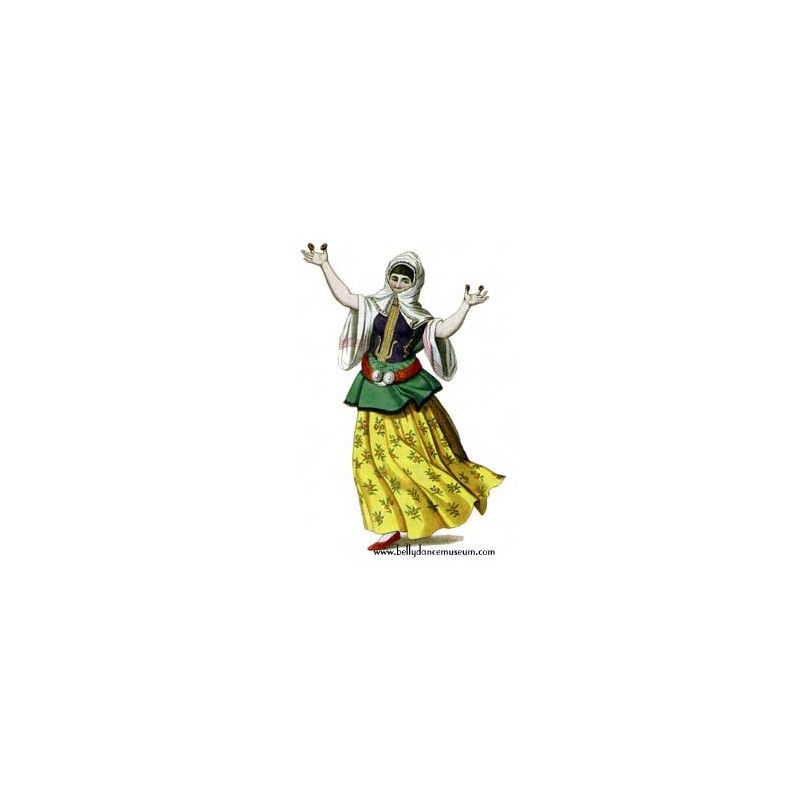



Ottoman female dancer or çengi playing small "zills".
Unique outstanding color lithograph of a drawing made aournd 1798 by Octavien Dalvimart
Published in 1802 as "The Costume of Turkey". London: William Miller.
 Security policy (edit with Customer reassurance module)
Security policy (edit with Customer reassurance module)
 Delivery policy (edit with Customer reassurance module)
Delivery policy (edit with Customer reassurance module)
 Return policy (edit with Customer reassurance module)
Return policy (edit with Customer reassurance module)
Octavien Dalvimart worked in Britain as painter and engraver. Later on - in 1803 - he lived in Paris.
From 1796 to 1800 Dalvimart travelled through the Ottoman empire. This drawing showing a Gypsy dancers or çengi, is depicted in very real colours and first published in 1802.
"The Costume of Turkey, Illustrated by a Series of Engravings; with Description in English and French, London, Howlett and Brimmer for William Miller."
"Although both music and dancing are forbidden bu the Mussulman religion, these amusements are tolerated by the governement. The female dancers, who are generally either young slaves, or the wives of Mahometan musicians, hardly ever appear in public places. They go to the houses of individuals, where they dance, in the same way as the men, either alone, or in pairs. They are very loosely dressed; and their heads are always half covered with a veil. With castanets in their hands, and their eyes alternately languishing and piercing, they put themselves into the most free and voluptuous attitudes.
There always are also in the houses of the great, as well in the seraglio, a certain number of young slaves, who are practised in dancing to amuse their mistresses as well as their masters. In these different amusements, however, there is nothing noisy or tumultuous. They are indeed restrained bu the regulations of the police, which is very strict in this respect: and no person is allowed to have an entertainment with dancing and music, without permission of the magistrates."
Une danseuse à Constantinople
Quoique la musique et la danse sont proscrites par les lois de la religion Mussulmane, ces amusements sont neanmoins tolerées par le gouvernement. Les danseuses, qui pour la plupart sont des filles esclaves, ou les femmes des musiciens Mahometans, ne paroissent presque jamais dans les lieux publics. Elles se rendent dans les maisons particulieres, où elles dansent, comme les hommes, seules, ou deux à deux. Vetues assez lestement, la tête toujours demi couverte d'un voile, des castagnettes à la main, et les yeux tantôt languissans, tantôt etincelans, elles se livrent aux attitudes les plus voluptueuses et les plus libres.
Dans les harems des grands, comme dans celue du serail, il y a toujours un certain nombre de jeunes esclaves exercées à la danse, pour amuser les dames ainsi que leurs maîtres. On remarquera que ces divertissemens n'ont jamais rien de bruyant ni de tumultueux. Ils sont encore retenus par les lois de la police, toujours vigilante et sevère sur cet article. Aussi personne n'oseroit donner chez lui une fête avec de la musique, et des danses, sans la permission expresse des magistrats.